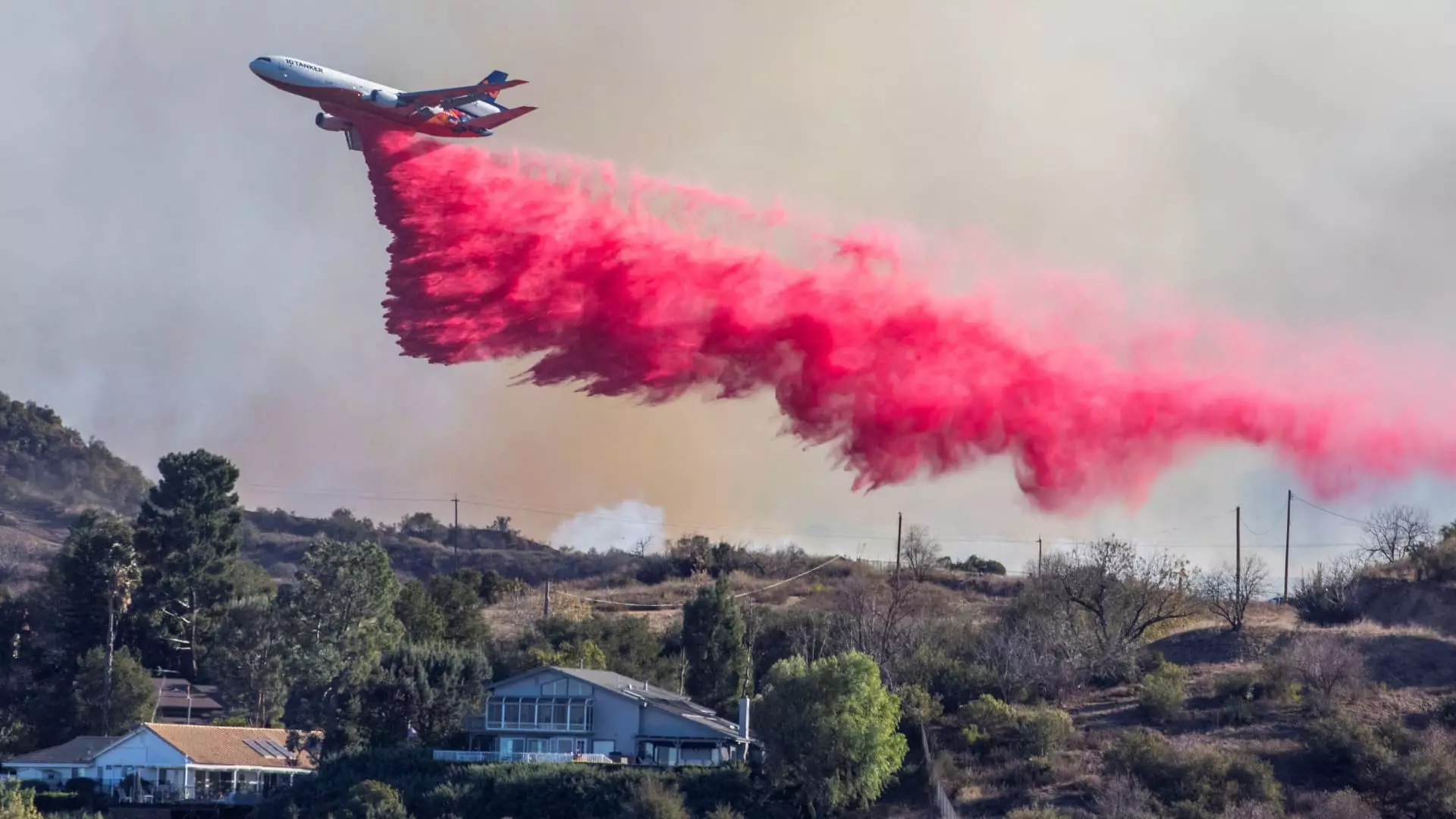The unprecedented wildfire season in California has sparked critical challenges for both state authorities and private aviation companies dedicated to aerial firefighting. As massive blazes threaten urban areas, it becomes increasingly apparent that existing resources and infrastructure may not be sufficient to combat the intensity and frequency of modern wildfires, particularly in light of climate change.
Increased Demand for Aerial Firefighting Resources
This year has marked a troubling shift in wildfire patterns, with some of the most destructive blazes occurring during what is typically characterized as the off-season. Companies dedicated to aerial firefighting, like 10 Tanker Air Carrier based in New Mexico, have found themselves in high demand even when they are not under contracted duty. With the increasing frequency of wildfires, the need for air tankers and other firefighting aircraft has accelerated. Joel Kerley, CEO of 10 Tanker, expressed the urgency of the situation by highlighting the limited availability of aircraft when they are desperately needed — “there’s not enough air tankers to go around,” he states.
Aerial firefighting has always been a crucial component in managing wildfires, assisting ground crews by dropping retardants and water to inhibit the spread of flames. The current wildfire crisis has revealed the vulnerabilities in this system, as despite having the largest collection of firefighting aircraft in the nation, demand often outstrips supply. The U.S. Forest Service holds contracts worth billions with private companies to ensure that an adequate number of aerial resources are available when fires rage out of control. The consistent rise in wildfire intensity and area burned suggests that these contracts may need to expand to accommodate an increasingly harsh fire season.
Responding to wildfires is fraught with complications, as highlighted by the recent Palisades and Eaton fires, which transformed into complex battles against nature. The hurricane-force winds acted as an accelerant, reducing containment efforts to a game of survival rather than a calculated response. Thousands of acres were consumed, and the subsequent catastrophic damage to neighborhoods drew public attention to the realities of modern firefighting.
Yet, logistical challenges persist in tackling these blazes. The aircraft assigned to combat these fires were often tied up in routine maintenance due to the off-season, illustrating the dissonance between demand and readiness. Sam Davis, CEO of Bridger Aerospace, underscored this fatigue by stating, “It was a push to get the first aircraft out the door,” revealing the operational strains on these companies. Maintenance cycles, development timelines for new aircraft, and the physical limitations of existing fleets hinder rapid deployment in crisis-like circumstances.
The process of converting standard aircraft into specialized fire tankers is not only time-consuming, taking upwards of eighteen months, but it also reflects the ongoing capital and resource challenges faced by these providers. Fortunately, some companies are beginning to expand their fleets, but this growth relies extensively on both funding and governmental relationships to ensure sustainability.
In light of increasing demands and technological advancements, the future of aerial firefighting involves significant strategic investment and development at both public and private levels. The advancements in firefighting aircraft, such as the upcoming DHC-515 model, and innovations in water sourcing techniques, can potentially reshape the approach to tackling wildfires. Increasing international collaboration among nations affected by similar fire challenges is a vital aspect of creating a united front against these natural disasters.
Organizations like the United Aerial Firefighters Association emphasize the need for specially trained pilots equipped to manage the ever-evolving dangers of aerial firefighting. With a workforce comprising former military pilots and seasoned airline professionals, the industry must continually adapt and train its pilots to the new dynamics of fire suppression.
As the wildfire crisis intensifies, it becomes clear that a multi-faceted approach is necessary. Not only must funding increase, but better workforce training and investment in innovative technologies are also critical to enhancing aerial firefighting capabilities. This broader strategy will be essential for navigating the unpredictable nature of wildfires in the face of climate change impacts.
Ultimately, as our collective understanding of these disasters grows, timely and effective resource allocation may prove pivotal in reshaping the battlefield of firefighting — one air tank at a time. The battle against wildfires is evolving, and with a commitment to innovation and collaboration, we must aim to meet this increased demand head-on.

Leave a Reply